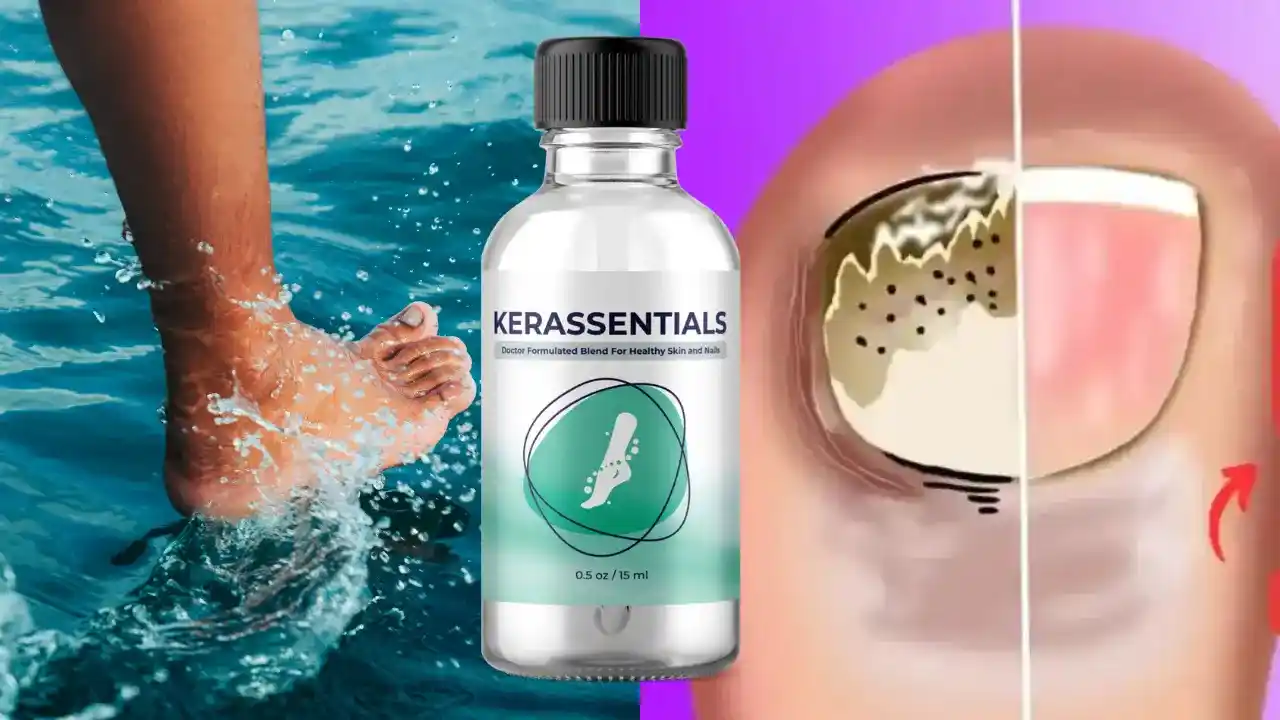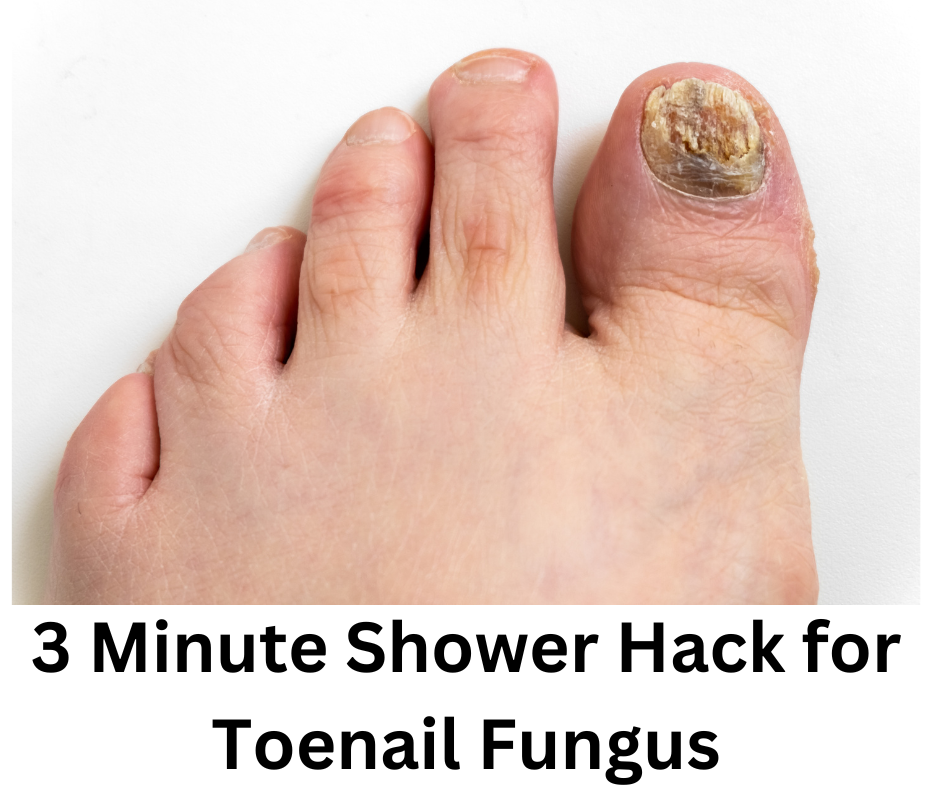3 Minute Soak For Toenail Fungus

Imagine stepping out of a warm bath, the scent of lavender still lingering in the air. You reach for your towel, and as you dry your feet, your gaze lingers on your toes. A slight discoloration, a thickened nail – a familiar, unwelcome sight. For many, this seemingly small imperfection, the persistent foe of toenail fungus, can cast a shadow on their confidence and comfort.
But what if the solution to this common ailment was surprisingly simple, requiring just three minutes a day? A growing buzz surrounds a particular method – a short, targeted soak – promising relief and a return to healthy, happy feet. This article explores the potential of this approach, examining its foundations and the experiences of those who have embraced it.
The Quest for Healthy Toenails
Toenail fungus, or onychomycosis, is more than just a cosmetic issue. It's a common fungal infection that affects the nail bed and nail plate, leading to discoloration, thickening, and even crumbling of the nail. According to the American Academy of Dermatology, it affects millions of people worldwide, impacting quality of life and self-esteem.
Historically, treatment options have been limited and often inconvenient. Oral medications, while effective, can carry potential side effects, and topical treatments often require months of consistent application with varying degrees of success. This has led many to seek alternative or complementary approaches.
The Rise of the 3-Minute Soak
The concept of a 3-minute soak hinges on the principle of targeted, consistent exposure to antifungal agents. Instead of lengthy, less frequent treatments, the idea is to create an environment that is consistently unfavorable to fungal growth. Advocates suggest that this can be achieved through regular, short soaks with specific solutions.
While the exact ingredients and protocols can vary, common components include:
Vinegar:
Vinegar, particularly apple cider vinegar, is a popular choice due to its acidity. The acidic environment is believed to inhibit fungal growth. Its readily available and affordable nature makes it an attractive option for many.
Tea Tree Oil:
Tea tree oil, derived from the Australian tea tree, is a well-known essential oil with potent antifungal and antiseptic properties. Studies have shown its effectiveness against a range of fungi, making it a valuable addition to a soak.
Epsom Salts:
Epsom salts, or magnesium sulfate, are often included for their soothing and anti-inflammatory properties. While not directly antifungal, they can help to soften the nail and surrounding skin, potentially improving the penetration of other antifungal agents.
The typical method involves combining one or more of these ingredients with warm water and soaking the affected foot (or feet) for approximately three minutes each day. Adherents emphasize the importance of consistency and proper hygiene, such as thoroughly drying the feet after each soak and avoiding the sharing of towels.
Anecdotal Evidence and Expert Opinions
While scientific evidence supporting the effectiveness of a 3-minute soak is still emerging, anecdotal reports abound. Many individuals swear by the method, citing noticeable improvements in the appearance and health of their toenails. Online forums and social media groups dedicated to natural remedies are filled with testimonials sharing personal experiences and variations on the soak recipe.
However, it's crucial to approach these claims with caution. As with any home remedy, results can vary significantly depending on the severity of the infection, the individual's overall health, and adherence to the protocol. Furthermore, what works for one person may not necessarily work for another.
Medical professionals generally advise caution when considering alternative treatments for toenail fungus. Dr. Emily Carter, a dermatologist at the Mayo Clinic, emphasizes the importance of consulting with a healthcare provider for a proper diagnosis and treatment plan. "While some home remedies may provide temporary relief or slow the progression of the infection, they are unlikely to completely eradicate the fungus," she explains. "In many cases, prescription medications, either topical or oral, are necessary to achieve a full cure."
Dr. Carter also cautions against relying solely on anecdotal evidence. "It's important to remember that fungal infections can sometimes mimic other conditions, such as psoriasis or nail trauma," she notes. "A proper diagnosis is crucial to ensure that you are receiving the appropriate treatment."
Incorporating the 3-Minute Soak: A Balanced Approach
For those interested in exploring the potential of a 3-minute soak, a balanced approach is recommended. This involves consulting with a healthcare provider to rule out any underlying conditions and to discuss the suitability of this method as a complementary treatment.
If approved by a doctor, the soak can be incorporated as part of a broader foot care routine that includes:
- Keeping feet clean and dry.
- Wearing breathable socks and shoes.
- Avoiding walking barefoot in public places.
- Trimming toenails straight across.
It's also important to manage expectations. The 3-minute soak is unlikely to provide a quick fix. Toenails grow slowly, and it can take several months to see noticeable improvements. Consistency and patience are key.
The Importance of Self-Care and Well-being
Beyond the potential benefits of a 3-minute soak, the act of taking a few minutes each day to care for one's feet can be a valuable form of self-care. In today's fast-paced world, it's easy to neglect our bodies and overlook the importance of simple rituals that promote well-being.
The gentle warmth of the water, the soothing scent of essential oils, and the focused attention on our feet can create a moment of calm and relaxation. This, in itself, can be a powerful antidote to stress and a reminder to prioritize our physical and mental health.
Ultimately, the effectiveness of a 3-minute soak for toenail fungus remains a topic of ongoing discussion. While anecdotal evidence suggests promise, more rigorous scientific research is needed to fully understand its potential and limitations. Regardless, prioritizing foot care, consulting with healthcare professionals, and incorporating moments of self-care into our daily routines are valuable steps towards overall well-being. Perhaps the true benefit lies not just in the potential to heal our toenails, but in the opportunity to nurture ourselves, one soak at a time.


















